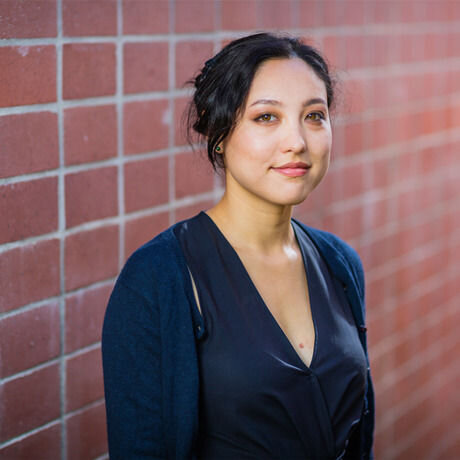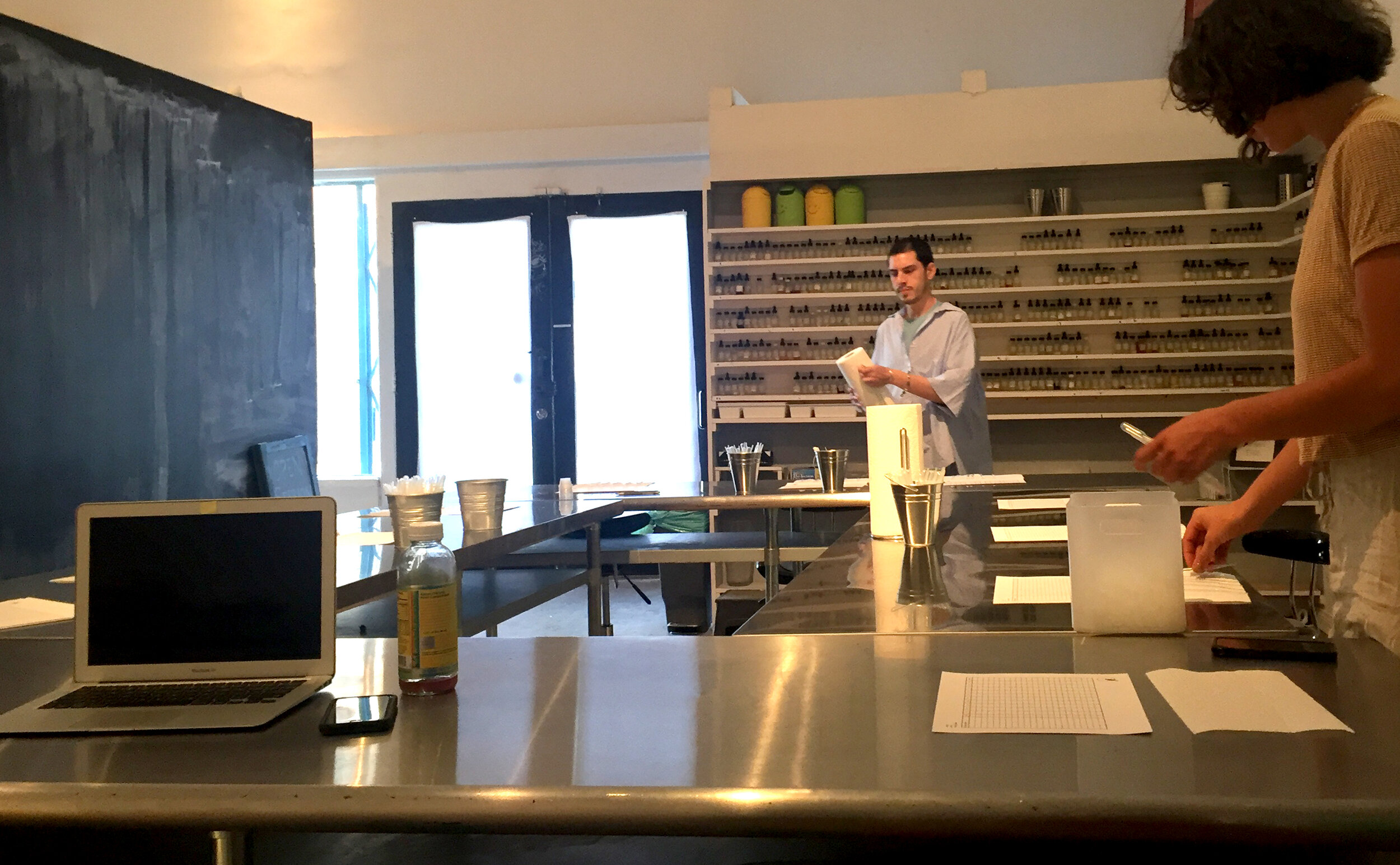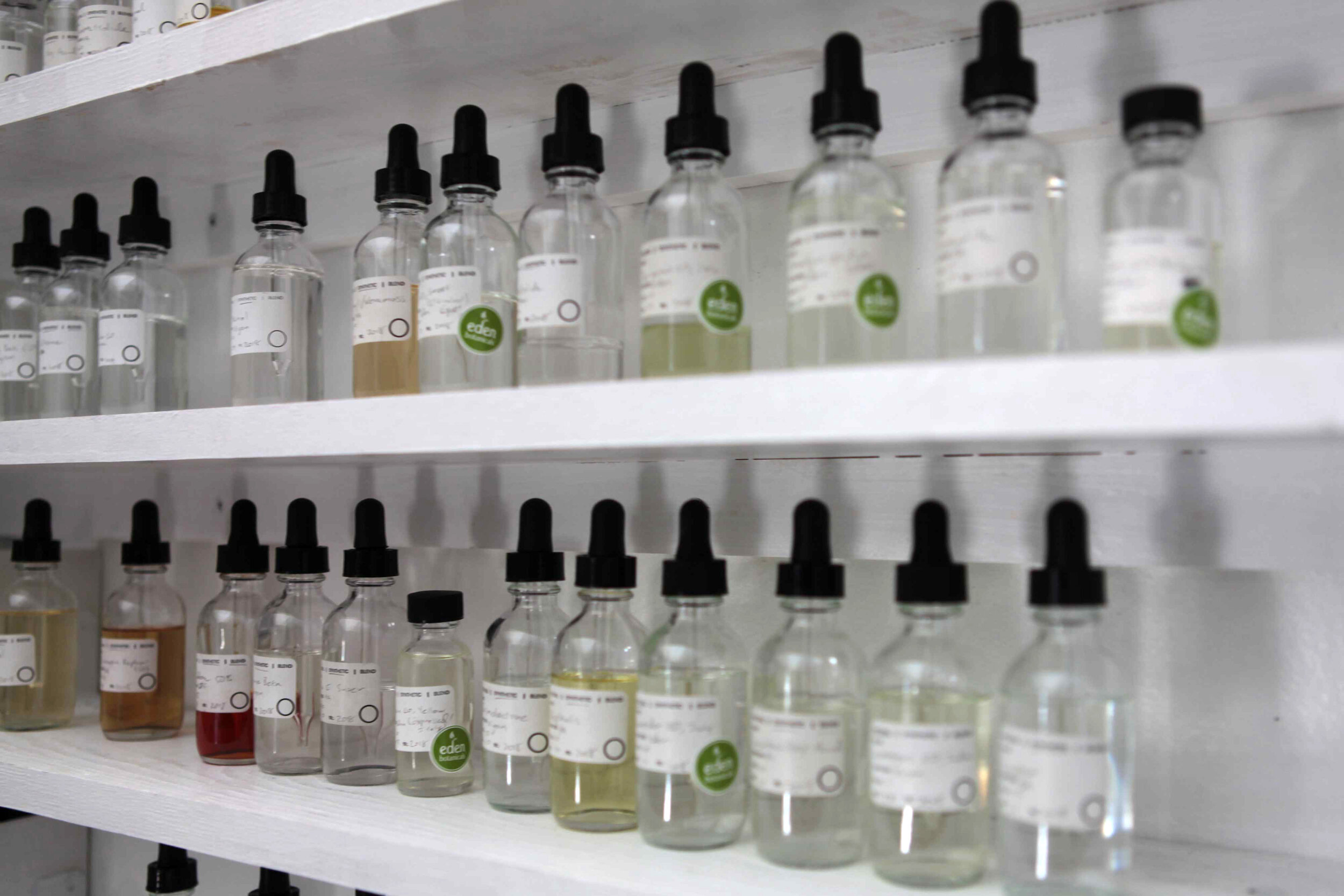You Smell Nice: Minetta Rogers of the IAO (Part II)





ON LOS ANGELES
“Los Angeles is really a special place, because you can actually get paid for doing your weird passion projects, which was not my experience when I was living in the Bay Area. I have three jobs, but I can still make enough money to do the things that I love that would be financially unfeasible otherwise, because people are willing to pay you money to do a scented tour of LACMA, for example. There's a lot of people who are not full-time perfumers, but are involved in the [scent] world.
One of our board members, Daniel Krasofski, has created scents for a theater company. He would work with the actors behind the scenes—working with their character intentions, then creating these perfumes that were just for them, so that they could start getting into character. It’s not something I would have known was something you could do creatively. So that’s one example of the cool scent culture that happens here. One of our other board members does scent raves—musical nights that also have olfactive components.
There are weird scent jobs that I'm constantly learning about. Two days ago, I met a woman whose entire job is evaluating and then creating the setup for smells that are dispersed through hotels. I didn't know that was a job you could have. And then there's the woman who smells packaged things that go out into space, ‘cause she has a super nose. Cool, insane jobs that are really not known to people who aren't part of the industry. I think a lot of people don't know that perfume, or other scented work, could be a possibility for them. ”
ON SCENT AND PERSONAL IDENTITY
“Like every other person who was a preteen in the early 2000s, I had a friend who had a bunch of Bath & Body Works body sprays. I would go over to her house and we’d experiment layering too much stuff. That was the first foray into experimenting with scents and playing dress up, like, Are you going to be a false Spice Girl today? Or are you going to be a cool water, spa day type of girl?
I really didn’t wear perfume in high school or college, until this music blog wrote about some U2 song. They compared it to being as cheesy and as inauthentic—but undeniable—as a cotton candy perfume that you would buy from CVS. I was like, “That actually sounds perfect. And that is something that I would like to be.” So I went and got the $6 gigantic bottle of cotton candy spray, and that was my vibe for a while. But it was always about trying to figure out what other people were saying—about what a scent says about the person who is wearing it—and trying that on for size.
I have a few scents that are really important to me, in terms of people that I’ve been, or people that I’ve returned to being, but I don't wear them all the time. One of them I don't really even wear, but it's still a very interesting and well-composed smell, and also something that is aspirational for me to be.
One of them is Yatagan, an old school, late Seventies masculine from the Caron line. It's beautiful in extremely hot or extremely cold weather. I like to describe it as a Patti LuPone sort of smell—it has a really big personality, and it doesn’t take shit from anyone, and it was exactly the kind of smell that I needed to surround myself in in late 2016, when everything was terrible.
A different one, a scent that I think of as mine, is Byredo’s M/Mink. It’s a beautiful, weird, honeyed floral that uses this material, adoxal, that I’ve been trying to use for four years and haven’t successfully yet. It’s an inky, marine, clean aldehyde. I have not given up. At some point, I will conquer it.”
ON FRAGRANT HISTORIES AND FUTURES
“One of the classes that I'm working on is going to be part blending and part history. We're going to start smelling scents from different eras and talk about either how to accomplish that, or the trends of a period. There are people who want to come to the Institute to be perfumers and others to be artists, but we don't yet have a full space for people who just want to learn about scents as a historical marker. Like Tabu, or Joy, meant a particular thing at a particular point in time. And we [at the IAO] have most of those, so it would be super cool to give people the opportunity to smell them. Not just smell it on a scent strip and walk away, but be able to unpack what that thing meant at that particular moment in time, and then how that meaning shifted.
I have only a couple of real anecdotal pieces of evidence to point me towards this, but—I think scent is also going to get a lot weirder. Like immersive theater is getting bigger and more popular, and scent can be a part of that. I also think that the intersection of biohacking or science and technology into personal development is going to be a really big thing. There was an article that came out in The Atlantic a couple months ago about the effect of vitamins on your own personal scent—there's no reason to believe that there's not some mad genius who is biohacking their diet so that they can smell a certain way.
I’ve seen a number of articles about scent in cars as early warning systems, and I think that is going to be extremely interesting. Everyone talks about scent and memory as a backwards-facing thing, but there will also be a whole component of scent and creating new associations through using scent as an early warning system. So it's totally possible that we may have a microgeneration of people who associate the scent of lavender with running low on gas."
_
This was Part II of the conversation with Minetta Rogers, Director of Operations at the Institute for Art and Olfaction. If you missed Part I, where we chatted about her work at the IAO and the Perfume Design Challenge series she spearheaded, you can find it here.
